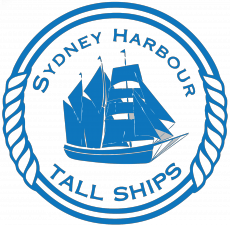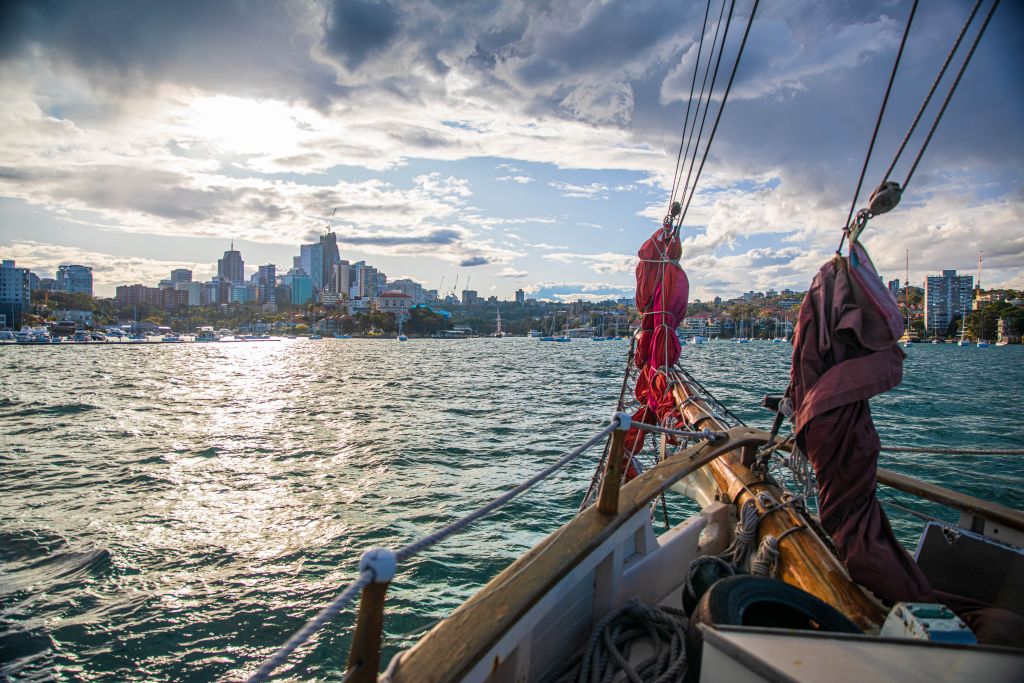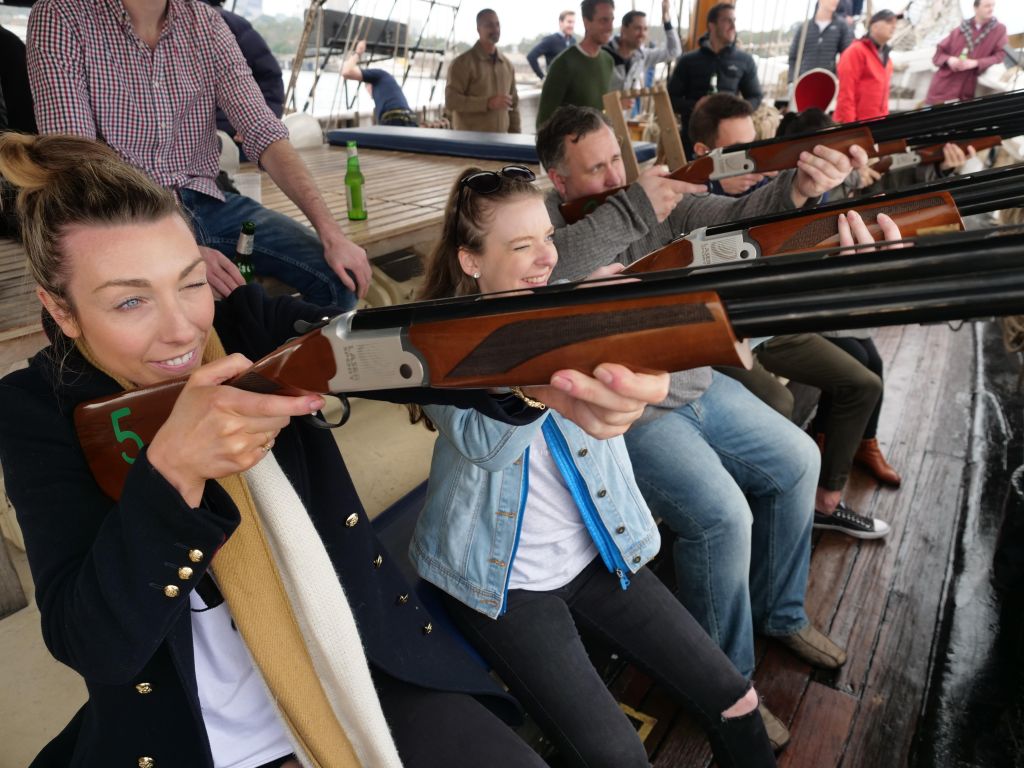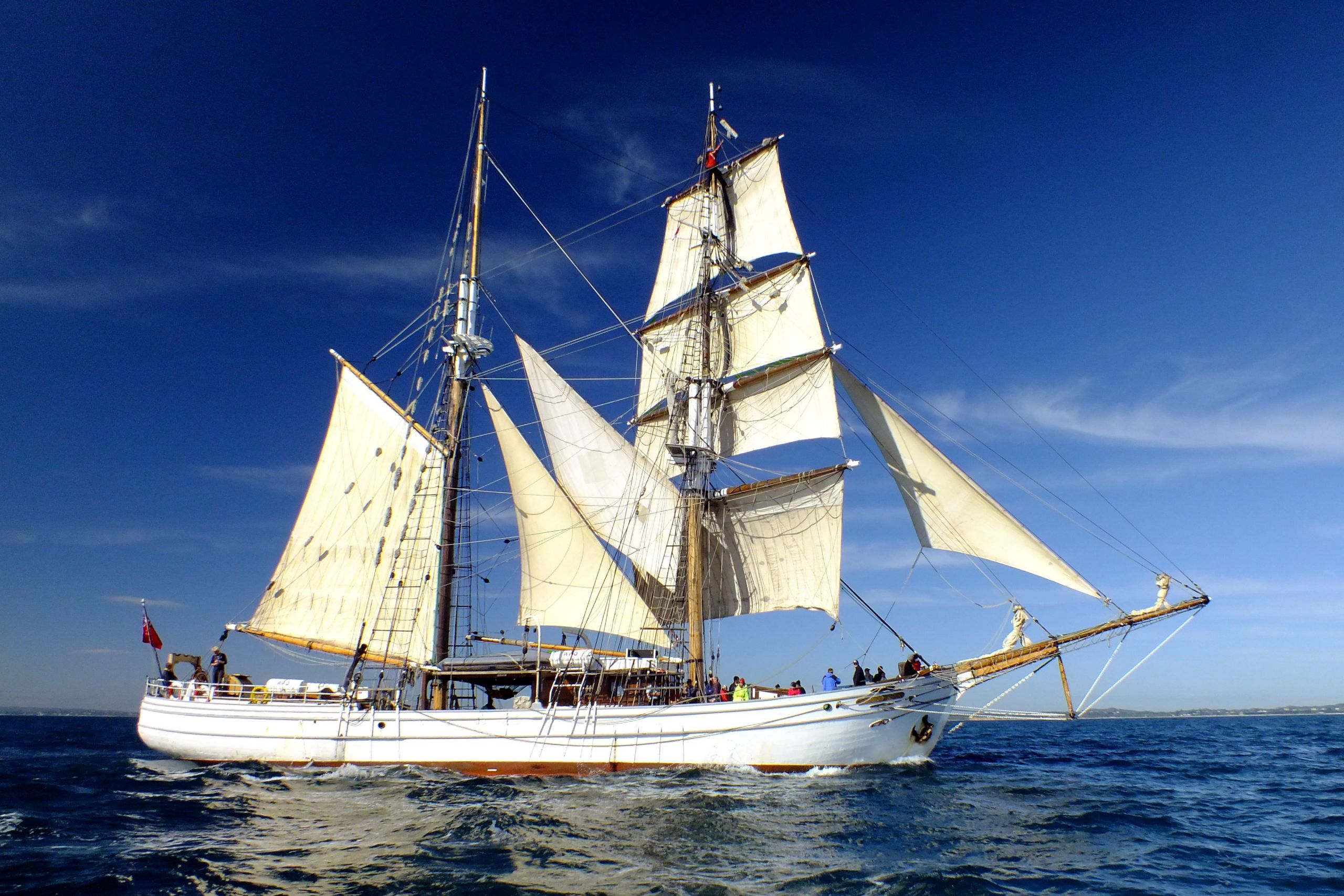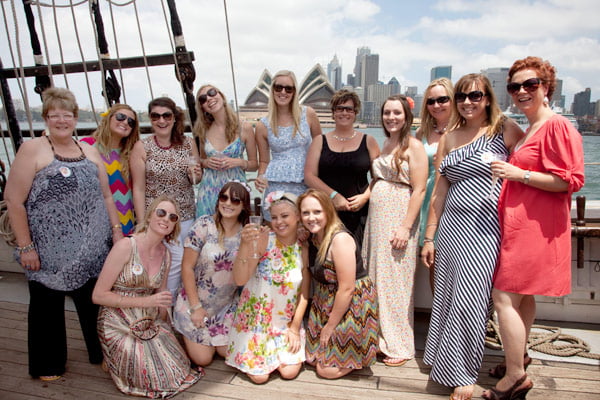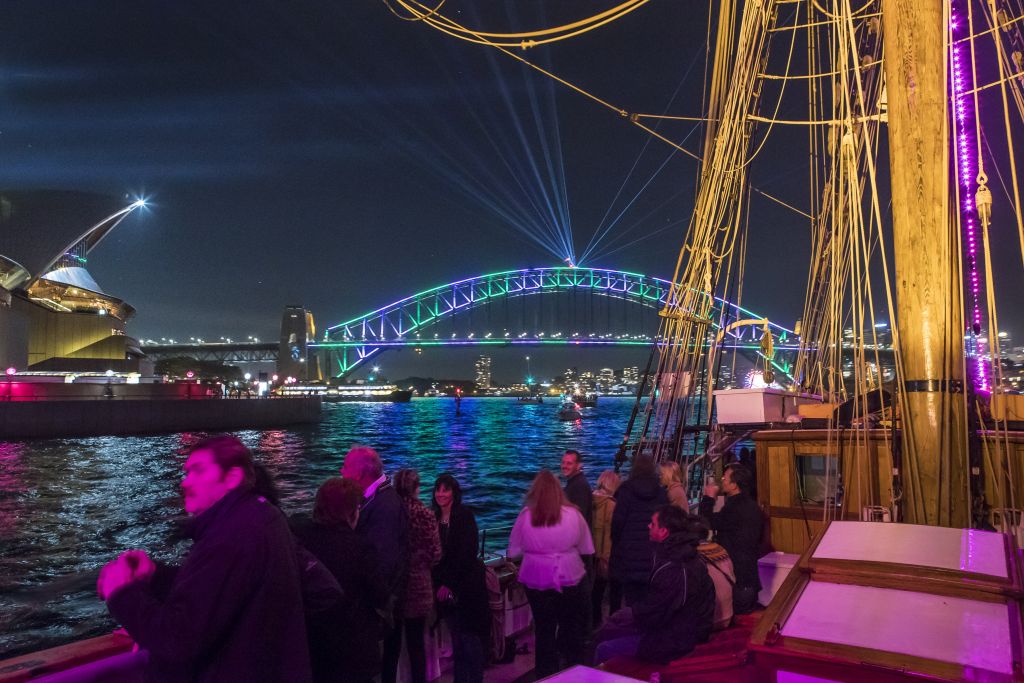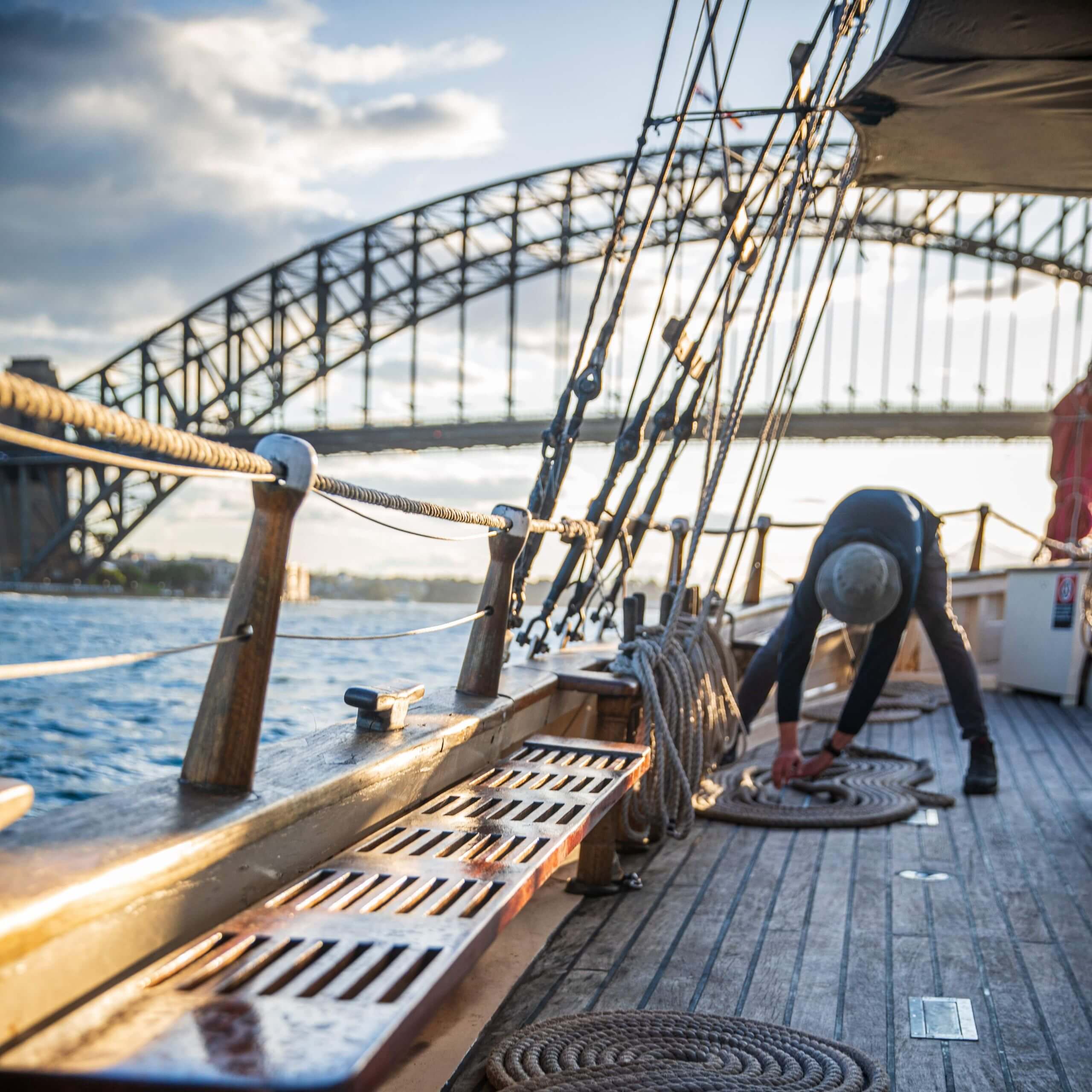

It’s 6am and the full moon is setting over distant purple forest as the sun rises over a lightly ruffled sea. We are 15 kilometers off the New South Wales south coast somewhere between Bateman’s Bay and Moruya and I’m at the helm of the Soren Larsen tall ship. Four bells ring out and my shift is half over.
The sea was kind last night as we glided down the coast on a moderate northerly breeze, the ship is sailing steadily and is quiet except for the woosh of the wake and the creak of rigging, as all hands not on watch are getting some well-earned rest. For the 8 of us on watch we are being treated to a most beautiful transition from night to day; the vast emptiness of the ocean off our port side and the Australian coast a way off to starboard, the deep marine blues of night giving way to a golden dawn. It is a magical time to be awake and it’s wonderful to be alive.
I almost didn’t get to take up my place on Soren Larsen because of sudden and unexpected heart valve surgery in early December which almost scuttled my plans to make this voyage. However, with a solid recovery and somewhat grudging support of my cardiologist, I made the Sydney deadline of 31 January 2023 and our departure for Hobart – 10 days to make the 860 odd nautical miles.
We 45 intrepid souls are on our way to the bi-annual Australian Wooden Boat Festival on the Derwent River in Hobart, 8 days into the future. But like all great trips, getting there is so much part of the adventure.


Day one saw a 3pm rendezvous at White Bay – Rozelle, headquarters of Sydney Harbour Tall Ships. Amidst the bustle of last-minute preparations, we were introduced to the crew and fellow “trainees” – a total of 13 crew and 22 trainees, we were a happy and excited bunch with a fair weather forecast. However, the prospect of southerly breezes for the night convinced the ship’s Master Marty Woods to anchor for the night in Farm Cove beside the Sydney Opera House. We could hardly complain – views over picturesque Sydney Harbour and its iconic bridge with the lights of the city as backdrop, we had time to enjoy dinner with a beer or two.
Day 2 started early as we made good our departure from Sydney Harbour, with a fresh northerly breeze making possible the hoisting of main sail followed by stay sails and the much anticipated square sails were deployed. It felt like this is what we came for; a tall ship experience of transferred orders, rope pulling in teams and billowing sails. Soren Larsen caught the wind and propelled us south down the New South Wales coast past the southern suburbs of Sydney, Royal National Park, Wollongong and beyond.
We trainees figured out early on that the permanent crew avoided calling us “passengers” in case we got a notion that we weren’t there as part of a working crew. Increasingly, and as we learned how, we shared the labor of ship life throughout the voyage to Hobart. Everyone was up for “learning the ropes”; we had sacrificed a comfortable flight down to be rewarded with the experience of a lifetime and an opportunity to learn how a tall ship works – in short, it’s manual work which relies on human muscle power, timing, deft commands, encouragement aided by sea shanties and lots of grunts. Our crew were as awesome as they were patient.
We made good southward progress throughout days 2 and 3, however weather forecasts predicted a storm in Bass Strait of +45 knot winds and huge swells that have travelled half way round the world. Coupled with a torn main sail, Marty decided that we would stop over in Eden to allow for a new sail to be brought down from Sydney and for us to wait out the storm. We spent 2 nights in this delightful town and most of us enjoyed some time ashore.
While in harbour I had a chance to climb the mast and secure (gasket) the square sails. This was initially a bit nerve wracking but definitely a memorable experience. It’s a 100 foot mast!
After leaving Eden we confronted south-east and southerly winds which required us to tack and motor sail most of the way down the coast. I was on helm with Marty when we crossed Disaster Bay on the southern Victorian Coast. We were fine…
And then we came to Bass Strait. The storm had moderated somewhat, and the wind was 25-28 knots on our starboard beam, which buffeted the ship around a fair bit. The westerly swell was not huge but it clashed with a northerly swell coming up the Tasmanian Coast which made for an uncomfortable day and night and we made good use of our wet weather gear while on deck. Not ideal conditions, but then again, sailing the wind and riding the swell is what we came to do and it was a wonderful adventure to be on deck with water flying about. Thankfully we had our sea legs by this time in the voyage.
After crossing Bass Strait the seas settled a lot and we made steady progress down the Tasmanian east coast, passing Flinders Island, Bicheno, Freycinet Peninsular and Wine Glass Bay, ducked into Port Arthur for breakfast, Maria Island – all well-known names from stories of the Sydney to Hobart Race.
On the afternoon of 9 February we crossed Storm Bay with all sails aloft and made good our anchorage in the lee of Bruny Island, in readiness for the Wooden Boat Festival. At night we had a final meal and celebration of a voyage enjoyed by all. It was great to eat, drink, sing badly, laugh at terrible jokes and ridiculous lies and enjoy the camaraderie that comes from a voyage on a tall ship.
On the morning of 10 February Soren Larsen joined 9 other tall ships and a gazillion smaller boats in the Australian Wooden Boat Festival Parade of Sail. It was a feast of wooden craft of all sizes and descriptions on the iconic Derwent River and launched 4 days of festivities at the Australian Wooden Boat Festival.
